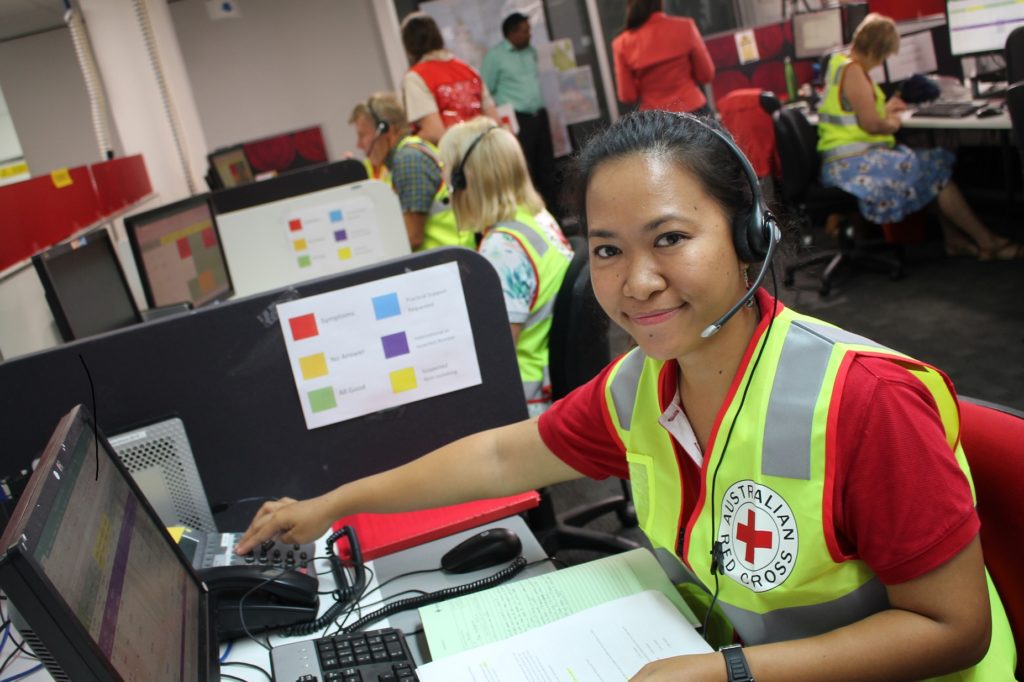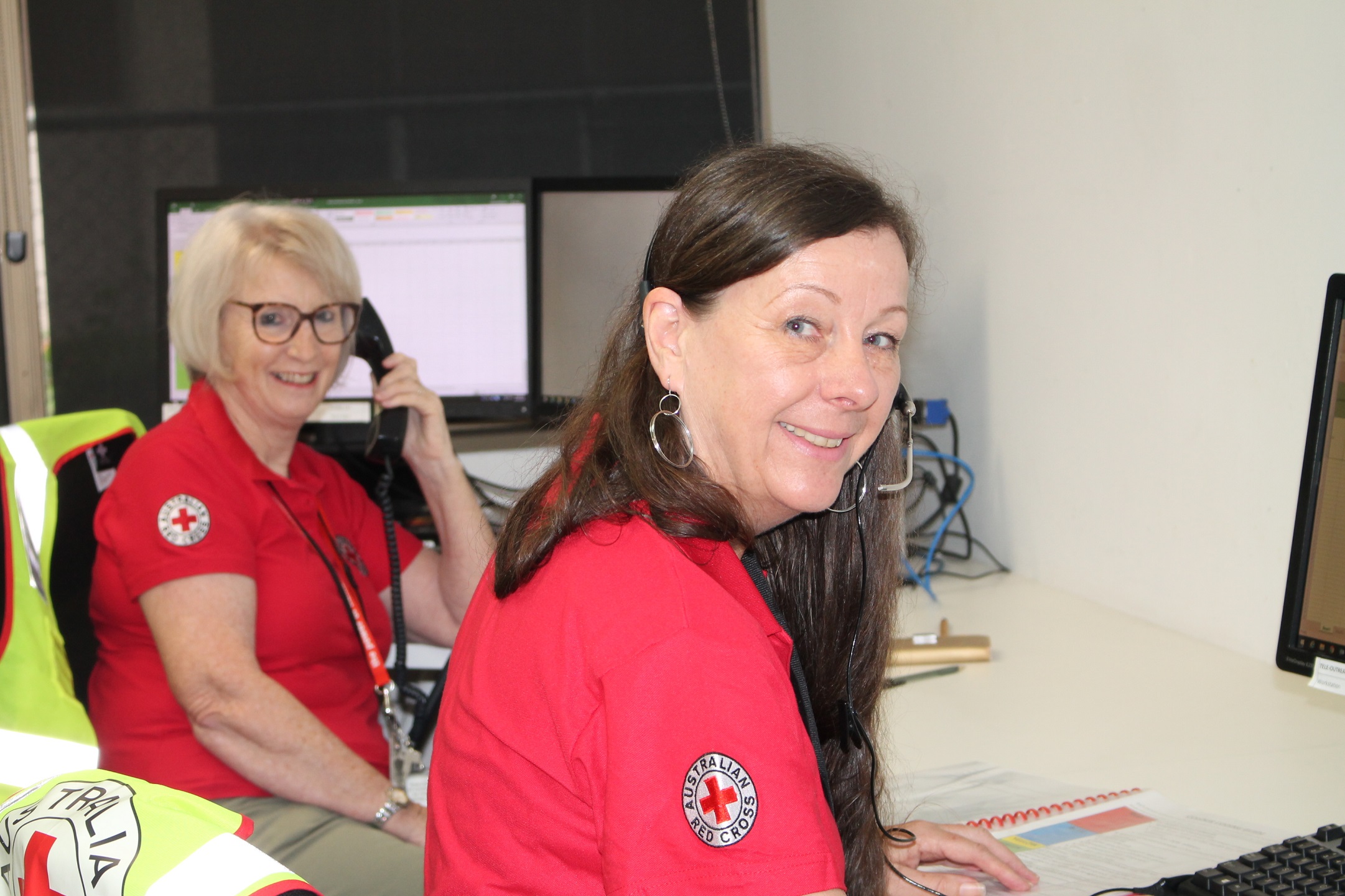
Australian Red Cross rolls out self-isolator outreach platform in less than a week
Faced with the need to maintain contact with people who are self-isolating in order to help protect the community from the ravages of COVID-19, Australia’s Governments have turned to leading disaster response organisation, Australian Red Cross.
In the space of a week, Australian Red Cross has been able to implement a system that allows its specially trained volunteers to call people who are in home isolation and check on their wellbeing over the phone each day. It’s a form of psychological first aid and critically important for many people in the community who may otherwise have very little outside contact.
The solution also allows Red Cross volunteers to contact people safely from their own homes – again reducing the risk of the virus spreading.
Beside the daily check on people, Red Cross is able to identify where it might be necessary to refer people for additional support to help with issues such as mental health care and access to food.
Each day Red Cross receives from the Governments it is working with, a list of people who are now in self-isolation, and it assigns trained volunteers to engage with people on the list.
The Queensland State Government was the first to engage with Red Cross. Initially volunteers were juggling 50 spreadsheets at a time to be able to contact the person who was self-isolating, ask them questions and collect their responses.
It was a slow, cumbersome and potentially error-prone approach that has now been replaced with a purpose-built streamlined solution.
Holly Brown is Red Cross national lead for systems and process improvement and explains that although each State and Territory has different requirements in terms of the questions asked and data collected during the daily call – one of the most critical outcomes is that in each case a social connection is forged and some of the psychological barriers of isolation are broken.
Community connection
While Red Cross has had a client case management system in place for many years that has allowed it to connect to vulnerable people, what it was lacking was a system that could connect a particular volunteer to a particular task – whether that was making a call, driving someone to a medical appointment or taking them on a social outing.
In early 2020, Australian Red Cross signed an agreement with Microsoft partner Velrada to develop just such a system using Dynamics 365 for Customer Service.
When COVID-19 hit it was all hands-on deck to shift the focus of that initiative to instead create a platform that would allow Red Cross volunteers to use the system safely from their own homes to connect with someone who is self-isolating.
According to Brown; “Velrada have been absolutely amazing and turned this around for us in six days so we can be up and running with live calls.”
According to Dominic Nolan executive director and general manager solutions at Velrada; “The team is all emotionally bought in to what we’re trying to do here. It’s not just delivering a software solution, they understand the social need here.”
The system’s technical foundations come from Dynamics 365 Customer Service while Power BI will be used to track call volumes and responses and display those on dashboards. Velrada used Forms Pro to create and configure the question and answer screens that volunteers use to collect responses.
Velrada integrated Dynamics 365 Customer Service with Red Cross’s telephony system so that users have to navigate only one interface.
Red Cross is fortunate to have over ten thousand active volunteers who support it across Australia. A subset of those volunteers has received specialist training in psychological first aid as part of the Red Cross’s emergency services work- and this is the group that can be called on to make the daily calls to self-isolators.
Brown says; “It’s really a simple setup now for our volunteers at home. They can log on to Dynamics 365 through My Apps and access their allocated calls for that day. It’s going to make life a lot simpler and it’s also enabling our workforce to work from home, which is what we all want.
“The referral pathways are different in each State and Territory, but we have built the system so that people can, if they are on a difficult call, be able to bring in their team leader or contact their team leader immediately while the client’s on hold.”
The system also allows volunteers to request a translator join the call to support people from non-English speaking backgrounds. While that request is currently initiated by the Red Cross volunteer, Velrada has built the system to have the smarts that will allow it to, in the future, group calls to specific language groups to ensure the most effective use of translators’ time.
According to Brown; “This is incredible for us as an organisation to have a system in place that allows us to scale up our services and react to demand so quickly.”

Future ready
While the initial focus has been on supporting person-to-person calls, which has been a priority in order to maintain human contact with people who are self-isolating, the system design would also lend itself to more automated contact through questionnaires which could be sent via email or text message.
Nolan notes; “We’ve laid the foundations here for a true omnichannel contact centre, as opposed to just a call centre with a call script. We’ve built a shell here where we can basically manage people with needs coming into the system, being put onto different priority lists and contact lists, which are basically campaigns, and then based upon that we can either contact them via call, text message, email, or ideally there could be a bot, via a self-service portal.
“There could be other organisations want to use this foundation but use it in a different way. Not everyone has 15,000 volunteers who can answer the phones for them.”
We’re focused on supporting our customers during these difficult times. For more information on how we can help your business, please see our dedicated webpage and report on Supporting Resilient Operations. We’ll be updating these resources regularly as the situation evolves.














